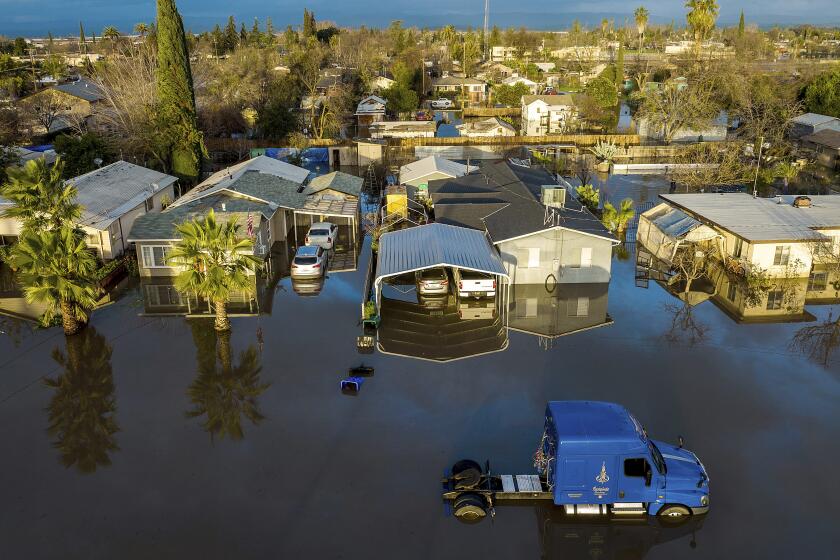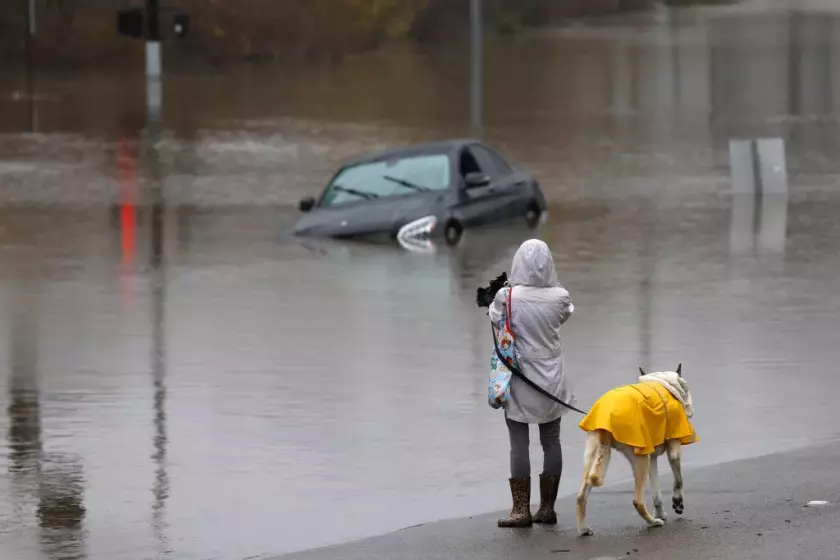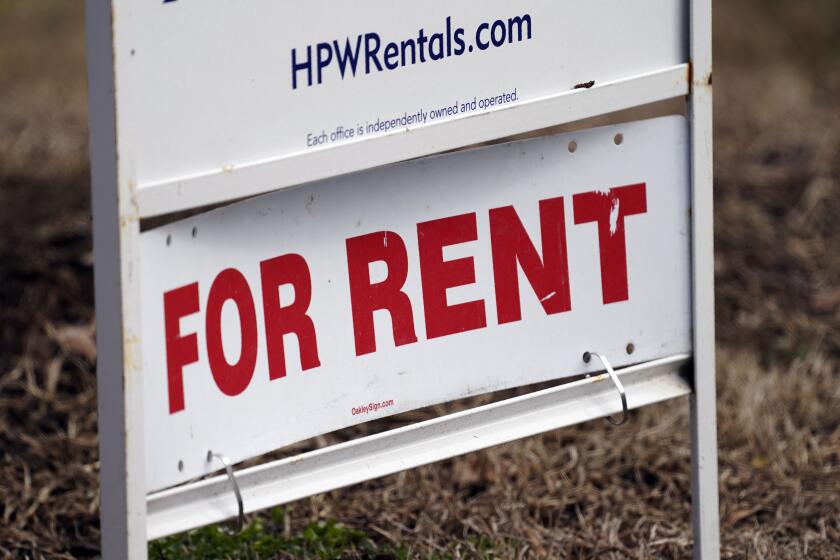What to know about renters insurance, and what it does and doesn’t cover

- Share via
When the unexpected happens — whether fire, hail or human error — renters insurance can provide much-needed stability. But many choose not to purchase coverage, including in places most frequently and hardest hit by natural disasters, new research shows.
Linda Klamm, who works as an attorney for insurance policyholders after catastrophes, lost her Oakland home to a 1991 firestorm, and she has firsthand experience with the challenges of collecting on a policy.
“The sky went from being a reddish color to the sun looking bloodied. Then it quickly became black,” she said of that fire. “I loaded my 3-year-old and not-quite-6-year-old into the back of the car. We got a few things — our dog, one of our three cats, the kids. There were two ways out. By the time I was leaving, one was engulfed in flames.”
Although homeowners tend to have more financial stability, renters more often face the burden of losses without a financial cushion, Klamm said.
For those who acquire a policy ahead of time, which Klamm encourages, fire and many other catastrophic events are typically covered to a point, but most policies still exclude earthquakes and floods.
Renters across Southern California are facing flood damage caused by the recent series of storms. Here’s how they can protect themselves and their personal property.
Replacing the bare necessities is “all-consuming and exhausting,” Klamm recalled of the days after the firestorm. “When I wasn’t driving or at work, I was working on the claim or shopping. My youngest cried every night and begged to go home.”
Even though she was trained to handle insurance claims, Klamm found the process of re-acquiring possessions, communicating with the insurance company and rebuilding her life grueling — and that’s with a policy in place.
The average cost of a renters insurance policy in 2023 was $148 a year, or about $12 a month, according to the most recent analysis by NerdWallet. That number is based on a policy for a hypothetical 30-year-old with $30,000 in personal property coverage, $100,000 in liability coverage and a $500 deductible, but coverage rates vary widely by state and policy choices.
Only about 40% of rental households purchase renters insurance, according to a 2022 report by the Joint Center for Housing Studies of Harvard University, compared with 88% of homeowners who purchase coverage, according to a 2023 study by the Insurance Information Institute.
A new analysis from the nonprofit Financial Health Network has found that the uneven distribution of insurance coverage tends to leave low-income households lacking policies, especially in states that have experienced the greatest losses because of climate change.
Climate change in the form of increasingly frequent natural disasters will likely cut into our savings over time.
“The cost of insurance products can act as a barrier,” the researchers found. “Some consumers prefer not to purchase insurance, especially if they are unaware of their risks or perceive their risks to be manageable.”
Asked why they choose not to purchase renters insurance, more than 1 in 3 polled said it was “too expensive” and they felt they had “no need for it,” according to the Financial Health Network.
States with higher-than-average annual losses include California, Florida, Louisiana, Texas and Washington, according to the Financial Health Network. The losses are incurred because of wildfires, flooding, landslides, hurricanes and other unusual weather events, such as tornadoes.
“Losses from natural disasters are an equity issue,” the study’s authors write. “Those living in high-loss states were more frequently financially vulnerable than residents of low-loss states.”
After a disaster, renters are not responsible for financing repairs to the building where they live, but still need to replace or repair belongings that are damaged or destroyed. As renters typically have lower incomes, less wealth and lower financial health than homeowners, the difficulties have a compounding effect.
Northern California was deemed especially unaffordable for renters, with some Southern California counties also topping the list of least affordable places in America.
The authors of the Financial Health Network report recommend structural policy changes. They suggest states mandate grace periods for consumers who experience financial hardship and struggle to pay insurance premiums, to help renters keep coverage if they experience cash flow issues. They also recommend landlords increase the use of rental insurance by making it a default expense for renters, which they would choose to opt out of, rather than opting into.
Many insurance companies will give you a discount on your renters insurance if you buy it along with another policy — such as auto insurance — which is known as bundling. For consumers who live in a high-risk area, Klamm said, “the first piece of advice is to get it — renters insurance — and then to consider cash value versus replacement cost.”
Insurance companies make this distinction between the kinds of compensation a policyholder receives after losses. Essentially: Would you prefer to receive the dollar value of what you own (the “cash value”), or the cost of replacing it (which tends to be higher, as goods depreciate over time)? If you opt for the “replacement cost,” you’ll pay a higher monthly premium.
Most renters insurance policies include:
- Personal property protection. If your belongings are stolen or destroyed, the insurance company pays (minus your deductible).
- Liability and medical costs. If you’re found responsible for a person being injured or property being damaged in your home, the insurance company pays.
- Loss of use. If you need to relocate after a disaster while your home is being repaired, the policy may cover hotel bills and other unexpected expenses in the interim.
Your credit score is only one factor landlords take into account when deciding who would be a good tenant.
Klamm advises policyholders to make changes to their coverage choices over the years.
“While people tend to get a policy and pay on it without changes, the limits get completely askew with reality as to what things might cost over time,” she said. “So check in on those and see that they’re adjusted, as you do tend to acquire more things.”
More to Read
Inside the business of entertainment
The Wide Shot brings you news, analysis and insights on everything from streaming wars to production — and what it all means for the future.
You may occasionally receive promotional content from the Los Angeles Times.














